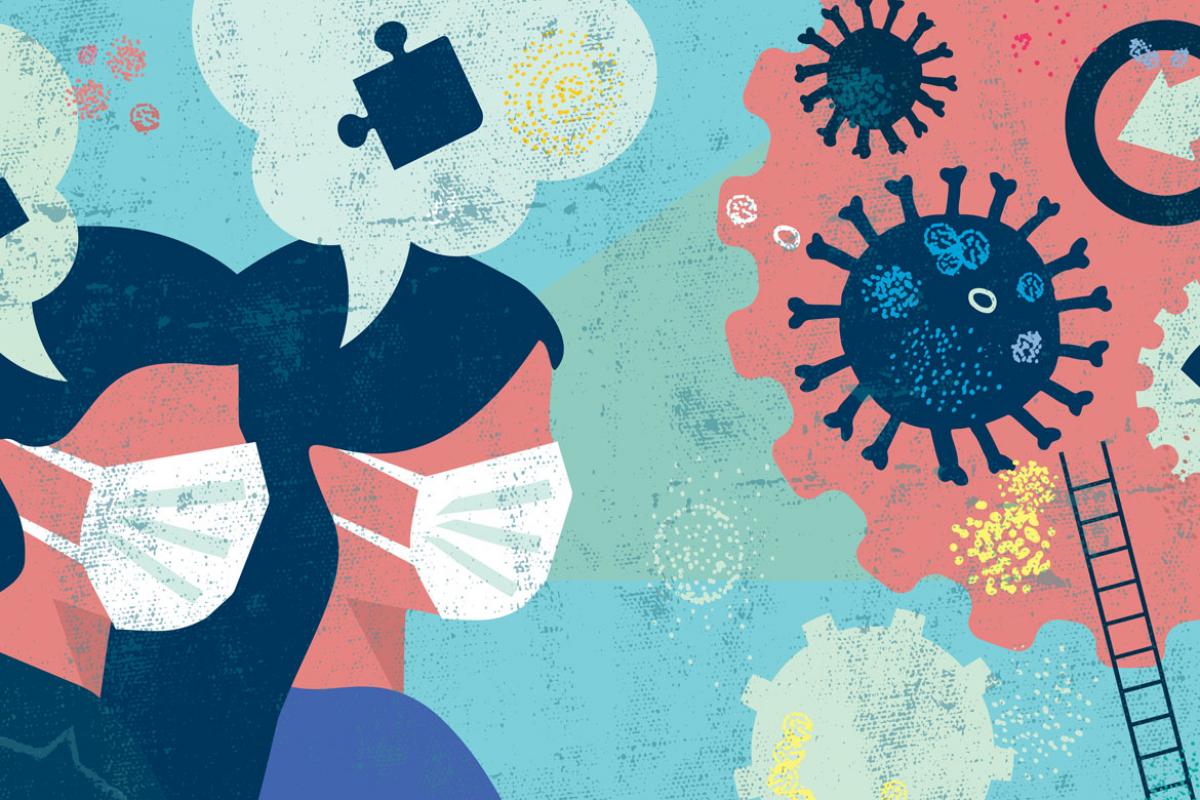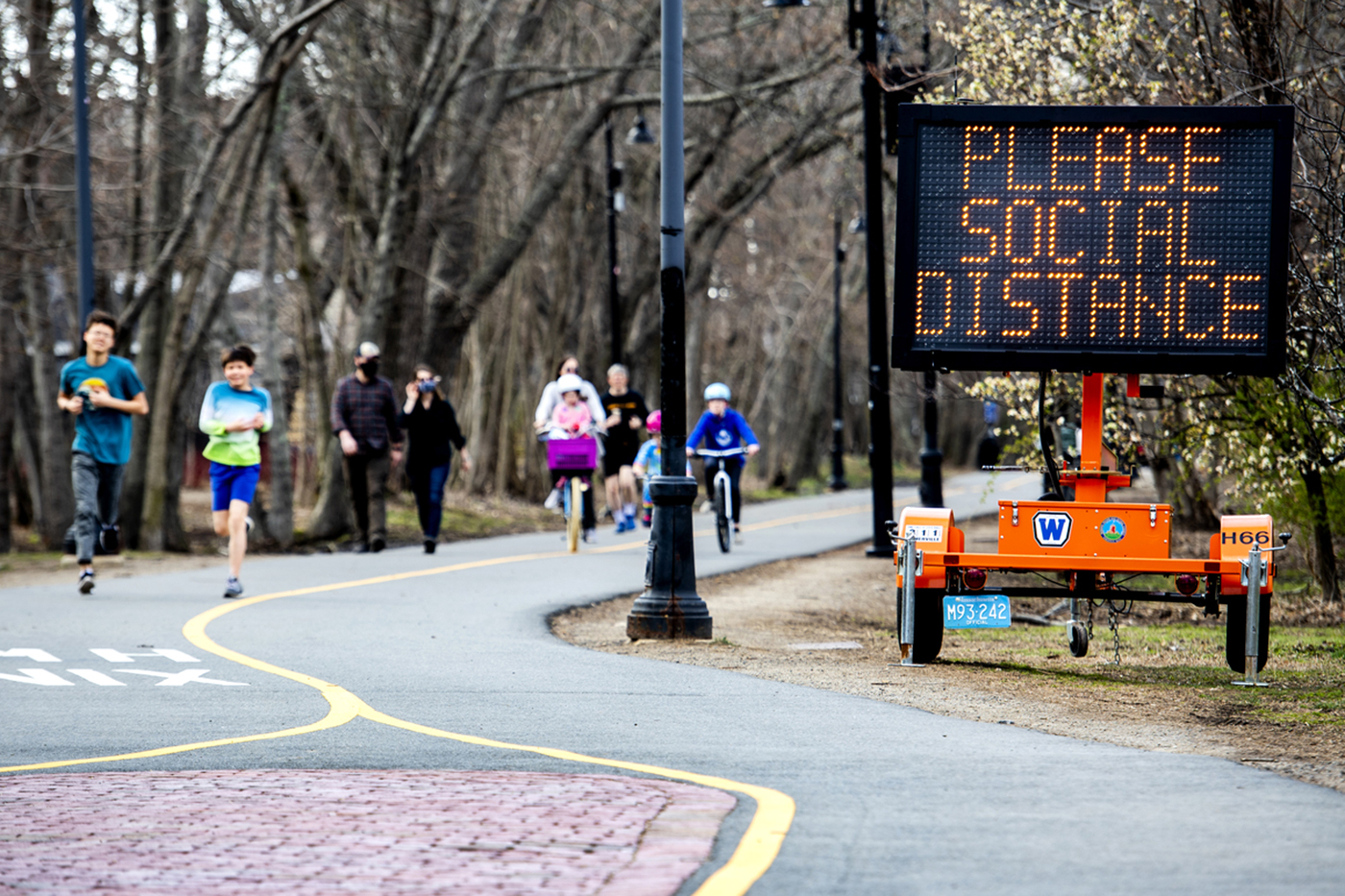Nurturing Mental Wellbeing During the Pandemic Challenges

Navigating the Challenges: Nurturing Mental Wellbeing During the Pandemic
The COVID-19 pandemic has brought forth unprecedented challenges, impacting every facet of life. Amidst the physical health concerns, the pandemic has also triggered a global mental health crisis. Nurturing mental wellbeing during these challenging times has become a paramount concern, requiring a holistic approach to address the multifaceted aspects of mental health.
Understanding the Impact on Mental Health
The uncertainties, social isolation, economic pressures, and health anxieties associated with the pandemic have collectively contributed to a surge in mental health issues. Understanding the impact of these stressors on mental health is the first step towards implementing effective strategies for support and resilience.
Prioritizing Self-Care and Routine
Amid the chaos, establishing and maintaining a routine is crucial for mental wellbeing. Prioritizing self-care activities, such as regular exercise, adequate sleep, and healthy eating, can significantly contribute to stress reduction and emotional balance. Small, consistent self-care practices become pillars of stability in uncertain times.
Fostering Social Connections in a Distanced World
Social distancing measures have led to increased feelings of isolation and loneliness. Fostering social connections, even in a virtual space, is essential for mental wellbeing. Regular video calls, online group activities, and staying connected with friends and family can provide a sense of support and combat feelings of loneliness.
Seeking Professional Support
For individuals facing more severe mental health challenges, seeking professional support is crucial. Therapists, counselors, and mental health professionals can provide valuable guidance and therapeutic interventions. Telehealth services have become more widely available, offering convenient and accessible options for seeking help.
Addressing Pandemic-Related Anxiety
The constant barrage of pandemic-related information can contribute to heightened anxiety levels. Implementing strategies to manage and limit exposure to news, fact-checking information sources, and focusing on positive and uplifting content can help mitigate pandemic-related anxiety.
Encouraging Open Conversations About Mental Health
Destigmatizing mental health discussions is essential for fostering a supportive environment. Encouraging open conversations about mental health allows individuals to share their experiences, seek guidance, and realize they are not alone in their struggles. Creating a culture of understanding reduces the barriers to seeking help.
Promoting Mindfulness and Stress Reduction Techniques
Incorporating mindfulness and stress reduction techniques into daily life can be beneficial for mental wellbeing. Practices such as meditation, deep breathing exercises, and mindfulness-based activities help individuals manage stress, improve focus, and cultivate a sense of calm in the midst of uncertainty.
Balancing Work and Personal Life in Remote Environments
The shift to remote work has blurred the boundaries between professional and personal life, contributing to increased stress and burnout. Establishing clear boundaries, taking breaks, and prioritizing work-life balance are crucial for maintaining mental wellbeing in a remote work environment.
Cultivating Hobbies and Creative Outlets
Engaging in hobbies and creative outlets is a constructive way to channel energy and alleviate stress. Whether it’s art, music, writing, or other creative pursuits, dedicating time to activities that bring joy and fulfillment contributes to a more balanced and resilient mental state.
Reflecting on Growth and Resilience
The pandemic has been a collective challenge that has tested the resilience of individuals and communities. Reflecting on personal growth, acknowledging one’s resilience, and recognizing strengths developed during difficult times can foster a positive mindset and outlook for the future.
For more information on nurturing mental wellbeing during the pandemic, visit Mental Wellbeing Pandemic.
Navigating Life: Social Distancing in the Pandemic Era

Adapting to Change: Navigating Life Through Social Distancing in the Pandemic Era
The global pandemic has reshaped the way we live, work, and interact. Central to these changes is the practice of social distancing, a necessary measure to curb the spread of the virus. As we navigate life in this new normal, understanding the impact of social distancing and adopting strategies for its effective implementation becomes essential.
The Rationale Behind Social Distancing
Social distancing serves as a critical tool in reducing the transmission of infectious diseases, including COVID-19. By minimizing close contact between individuals, especially in crowded spaces, the spread of the virus can be slowed, protecting both individuals and the broader community. Understanding the rationale behind social distancing is fundamental to its successful implementation.
Challenges in Maintaining Social Connections
While the necessity of social distancing is clear, it comes with challenges, particularly in maintaining social connections. Human beings are inherently social creatures, and the physical separation mandated by social distancing measures can lead to feelings of isolation and loneliness. Finding innovative ways to stay connected becomes paramount.
Virtual Connectivity: Bridging the Gap
In the digital age, virtual connectivity has emerged as a crucial bridge to overcome the challenges posed by physical distancing. Video calls, virtual meetings, and online social platforms have become lifelines for maintaining connections with friends, family, and colleagues. Leveraging technology to foster virtual social interactions is an essential aspect of adapting to this new way of life.
Navigating Changes in Work and Education
Social distancing has profoundly affected the workplace and educational institutions. Remote work and online learning have become the norm, requiring adjustments in daily routines and approaches to collaboration. Adapting to these changes involves creating effective home workspaces, embracing digital tools, and finding a balance between professional and personal life.
Impact on Mental Health: Addressing Isolation and Stress
The isolation resulting from social distancing measures can have a significant impact on mental health. Feelings of loneliness, anxiety, and stress may arise. Acknowledging these challenges and actively seeking strategies for mental well-being, such as regular exercise, mindfulness practices, and staying connected virtually, are crucial for maintaining mental health in the pandemic era.
Reimagining Social Activities: Safety First
Social distancing doesn’t mean the end of social activities; rather, it requires a reimagination of how we engage with others. Outdoor activities, virtual events, and small, safely distanced gatherings become key components of socializing while prioritizing safety. Adhering to public health guidelines ensures that social interactions contribute to rather than compromise community health.
Community Support and Solidarity
The pandemic has underscored the importance of community support and solidarity. Acts of kindness, mutual aid initiatives, and supporting local businesses are ways in which communities can come together during these challenging times. Building a sense of solidarity fosters resilience and strengthens the collective response to the pandemic.
Balancing Caution and Connection
As vaccines become more widely available and restrictions evolve, finding the right balance between caution and connection is crucial. Adapting to changing circumstances while prioritizing public health guidelines ensures a responsible and considerate approach to social interactions. Flexibility and ongoing awareness are key to navigating the uncertainties of the pandemic era.
Looking to the Future: Lessons Learned and Resilience
Social distancing has been a central aspect of navigating the challenges posed by the pandemic. As we look to the future, the lessons learned from adapting to social distancing – resilience, innovation, and a renewed appreciation for human connections – will shape the way we approach public health and community well-being in the post-pandemic world.
For more insights on navigating life through social distancing, visit Social Distancing Pandemic.
Mental Wellbeing in the Pandemic: Challenges and Strategies

In recent times, our world has been grappling with a unique kind of challenge that transcends borders and affects individuals on a global scale. The COVID-19 pandemic has not only posed a threat to physical health but has also brought to the forefront the importance of mental wellbeing. As societies navigate the complexities of lockdowns, social distancing, and uncertainty about the future, the impact on mental health has become increasingly evident. In this article, we explore the crucial connection between the pandemic and mental wellbeing.
The Toll on Mental Health:
The pandemic has introduced a myriad of stressors, ranging from fears of contracting the virus to economic uncertainties and social isolation. These challenges have taken a toll on mental health, leading to a surge in anxiety, depression, and other mental health disorders. The constant stream of pandemic-related information and the disruption of daily routines have contributed to heightened stress levels for many.
The Importance of Social Connection:
Social distancing measures, while necessary for public health, have inadvertently contributed to feelings of loneliness and isolation. Human beings are inherently social creatures, and the sudden disruption of social connections can have profound effects on mental wellbeing. Maintaining social ties, even through virtual means, becomes crucial in alleviating the impact of isolation and fostering a sense of community.
Adapting to Change:
One of the key factors influencing mental health during the pandemic is the need for individuals to adapt to a rapidly changing environment. Uncertainty about the future, coupled with the need to adapt to new work and lifestyle patterns, can be a significant source of stress. Building resilience and developing coping mechanisms are essential components of navigating these changes while safeguarding mental wellbeing.
The Role of Physical Health:
Physical and mental health are intricately linked, and the pandemic has underscored the importance of maintaining a healthy lifestyle. Regular exercise, a balanced diet, and sufficient sleep play crucial roles in supporting mental health. Establishing and maintaining healthy habits contribute not only to physical resilience but also to emotional and psychological well-being.
Seeking Professional Support:
Acknowledging the challenges to mental health and seeking professional support is a crucial step in mitigating the impact of the pandemic. Mental health professionals provide valuable guidance, coping strategies, and a supportive space for individuals to navigate their emotions. The destigmatization of seeking mental health support is an essential aspect of fostering a culture that prioritizes well-being.
Community Initiatives for Mental Wellbeing:
Communities play a vital role in supporting mental health initiatives. From local support groups to online communities, the shared experience of the pandemic can be a unifying force. By fostering a sense of solidarity and providing resources for mental health awareness, communities can contribute significantly to the collective well-being of their members.
In the midst of these challenging times, it’s crucial to recognize the interconnectedness of physical and mental health. As we navigate the complexities of the pandemic, prioritizing mental wellbeing is not just a personal responsibility but a collective endeavor that requires a supportive societal framework.
For more information on maintaining mental wellbeing during the pandemic, consider exploring resources such as Mental Wellbeing Pandemic. These resources can provide valuable insights, tips, and support for individuals seeking to prioritize and enhance their mental health in the face of ongoing challenges.
Navigating Challenges: Coping Strategies Amidst the Pandemic

Coping Strategies Amidst the Pandemic: Navigating Challenges with Resilience
The global pandemic has brought forth unprecedented challenges, requiring individuals to navigate uncertainty and upheaval. In this article, we explore coping strategies that empower individuals to navigate the complexities of the pandemic, fostering resilience and well-being during these trying times.
Understanding the Impact: Acknowledging the Challenges
Before delving into coping strategies, it’s essential to acknowledge the profound impact of the pandemic on various aspects of life. From health concerns to economic uncertainties and disruptions in daily routines, understanding the breadth of challenges sets the stage for effective coping mechanisms.
Prioritizing Mental Well-Being: The Foundation of Coping
Amidst the challenges, prioritizing mental well-being becomes paramount. Coping strategies often begin with recognizing and addressing the mental health impact of the pandemic. Practices such as mindfulness, meditation, and seeking professional support contribute to maintaining emotional balance and resilience.
Establishing Routine: Creating Stability in Uncertainty
The disruption of routines can add to the stress of the pandemic. Coping involves establishing a new sense of routine, even in the face of uncertainty. Creating a daily schedule, setting goals, and incorporating activities that bring joy and relaxation contribute to a sense of stability in turbulent times.
Fostering Social Connections: Combating Isolation
Social distancing measures have led to increased feelings of isolation. Coping strategies include finding innovative ways to foster social connections. Virtual gatherings, video calls, and reaching out to friends and family contribute to combating loneliness and strengthening social support networks.
Adapting to Remote Work Challenges: Balancing Professional and Personal Life
For those facing remote work challenges, coping involves adapting to the new professional landscape. Setting boundaries between work and personal life, creating a dedicated workspace, and maintaining regular breaks contribute to a healthier work-life balance.
Engaging in Hobbies and Creativity: Channeling Positive Energy
Coping with the pandemic involves channeling energy into positive outlets. Engaging in hobbies, creative pursuits, and activities that bring joy not only serve as distractions but also contribute to a sense of accomplishment and well-being.
Staying Informed, Setting Limits: Managing Information Overload
Constant exposure to pandemic-related information can contribute to stress and anxiety. Coping strategies include staying informed from reliable sources while setting limits on news consumption. Focusing on verified information and taking breaks from news updates help manage information overload.
Cultivating Resilience: Embracing a Growth Mindset
Coping with the pandemic requires cultivating resilience and embracing a growth mindset. Recognizing challenges as opportunities for personal and collective growth fosters a positive outlook. Coping becomes not just about surviving but about learning and adapting in the face of adversity.
Seeking Support: Building a Network of Assistance
No one should navigate the challenges of the pandemic alone. Coping involves recognizing when support is needed and actively seeking it. Whether through friends, family, or professional services, building a network of assistance is a key component of resilience.
Looking Forward: Embracing Hope for the Future
As individuals cope with the challenges of the pandemic, it’s crucial to look forward with hope. Coping strategies are not just about managing the present but also about building a foundation for a positive and hopeful future. Embracing hope becomes a powerful coping mechanism in itself.
For more insights on coping with the pandemic, visit Coping with Pandemic.




(501).jpg)

